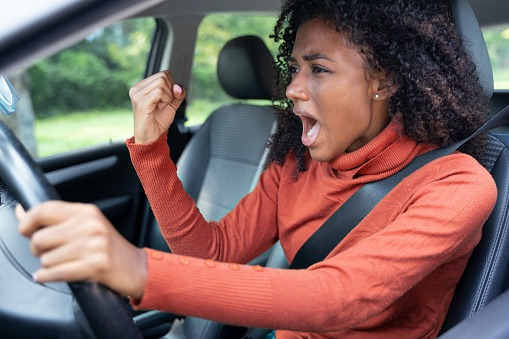Race car safety. It’s not just about the roaring engines and the rush of speed; it’s also about the incredible technology and measures that keep our favorite racers safe and sound.
From the early days of rudimentary protection to the high-tech safety devices or gear of today, the evolution of race car safety is a story of innovation, resilience, and, believe it or not, pure adrenaline. So, whether you’re a die-hard nascar racing fan or just curious about what goes on behind the scenes, let’s dissect this high-speed journey through the twists and turns of race car safety.

Understanding Race Car Safety Equipment
Safety on the racetrack is a game-changer, and it all begins with the gear. Let’s dive into the world of race car safety equipment.
Helmets
Imagine speeding around a track, your street car a blur against the asphalt. Now, think of the one thing between you and danger: your helmet. These aren’t your average bike helmets; we’re talking state-of-the-art, life-saving gear.
Racing helmets are designed to withstand severe impacts and protect against fire. They’re lightweight yet incredibly strong, thanks to materials like carbon fiber and Kevlar. Plus, they’re equipped with visors that can handle extreme temperatures and offer clear vision, no matter the speed.
Fire-Resistant Suits
Next up in our safety arsenal are the fire-resistant suits. These aren’t just any suits; they’re like a firefighter’s gear but for the racetrack. Made from materials such as Nomex, they can withstand intense heat and flames, giving drivers those crucial extra seconds to escape in the event of a fire.
Harnesses And Restraint Systems
The point harness is the unsung hero of race car safety. This isn’t just a seatbelt; it’s a sophisticated restraint system that keeps drivers firmly in their respective seat or seats during crashes.
These harnesses are typically five or six-point systems, securing the driver from multiple angles and distributing forces evenly during an impact. They’re adjustable and tailored to each driver, ensuring not just safety but also comfort during those high-speed turns.
The Role Of The Car In Safety
Have you ever wondered how race cars are designed to keep drivers safe even during the most intense crashes? It’s all about the role of the car itself in ensuring safety.
Roll Cages
Now, let’s check out the car itself. One of the key safety features? The roll cage. This is a carefully engineered structure that encases the driver, providing a survival space in case of a rollover.
Made from high-strength steel or alloys, these cages are designed to:
- Absorb and distribute impact forces
- Keep the car’s frame intact
- Make sure the driver is safe inside
Crumple Zones And Impact Absorption
Race cars are also equipped with crumple zones. These are areas of the car, typically at the front and rear seats, that are designed to deform in a controlled way during a collision. The idea is to:
- Absorb as much impact energy as possible
- Prevent it from reaching the driver
It’s a delicate balance: making the car strong enough to be protective, yet flexible enough to absorb energy in a crash.

Fire Suppression Systems
Finally, let’s talk about fire suppression. In racing, fire is a real risk, and that’s where onboard fire suppression systems come in. These systems can detect a fire automatically or be activated by the driver.
Once triggered, they release fire-extinguishing agents to quickly douse flames, buying precious time for the driver to escape. These systems are rigorously tested and are an essential part of modern race car safety.
Safety Protocols And Procedures
Before the engines roar and the tires screech, there’s a crucial behind-the-scenes act that ensures every street race is both thrilling and secure. It’s all about safety protocols and procedures.
Pre-Race Inspections And Safety Checks
Before the engines roar to life, there’s a meticulous process that ensures everything is in top-notch condition. Pre-race inspections and safety checks are like a safety ritual. Every component of the car is scrutinized, from the engine to the brakes, ensuring that there are no hidden issues that could jeopardize safety.
Even the smallest loose bolt or worn-out brake pad can be the difference between a safe race and a disaster.
Emergency Response And Medical Teams
Safety at the racetrack isn’t just about preventing an accident; it’s also about being prepared for the unexpected.
That’s where the unsung heroes of racing come in – the emergency response and medical teams. They’re on standby, ready to spring into action at a moment’s notice. Whether extracting a driver from a wrecked car or providing immediate medical attention, these teams are the backbone of race car safety.
The Importance Of Regular Driver Training And Simulations
Safety in racing isn’t just about the street cars; it’s also about the drivers. That’s why regular driver training and simulations are an integral part of race car safety. Drivers undergo rigorous training to:
- Hone their skills
- Learn about safety procedures
- Practice emergency scenarios
Simulations allow them to experience high-stress situations in a controlled environment, preparing them for real-life emergencies on the track.
Technological Advancements In Race Car Safety
In the world of racing, technology isn’t just about speed; it’s also about safety. From advanced safety gear to cutting-edge gadgets, technology plays a pivotal role in keeping racers secure.
Innovations In Safety Gear
The world of race car safety gear is in a constant state of evolution. Helmets, suits, gloves, and even shoes are continually upgraded to provide better protection and comfort. For instance:
- Helmets: Helmets now have advanced communication systems, allowing drivers to stay connected with their teams while racing.
- Suits: Suits are designed with ergonomic considerations to ensure drivers can move freely without compromising safety.
Advances In Car Design And Materials
Race cars themselves have seen remarkable advancements in safety. Car manufacturers are constantly researching and experimenting with new materials to make vehicle parts, such as roof, body, and interior, safer.
Lightweight yet incredibly strong materials like carbon fiber and titanium are used extensively in car design.
The Future Of Race Car Safety Technology
The race for safety never stops. The future promises even more exciting advancements with high performance in race car safety technology during street use. We’re talking about:
- Autonomous safety systems that can intervene to prevent accidents
- Real-time health monitoring for drivers
- Smarter fire suppression systems
The integration of artificial intelligence and data analytics is set to revolutionize safety, making it more predictive and proactive than ever before.

The Psychology Of Safety In Racing
Have you ever wondered what goes on in a race car driver’s mind when they’re zooming around the track at breakneck high speeds? It’s not just about skill and precision; it’s also about the psychology of safety so that drivers can avoid injuries.
Let’s take a pit stop and explore the mental aspects that drivers deal with in the world of racing.
1. Mental Preparedness And Stress Management
Imagine hurtling down the track at 200 miles per hour. Every decision, every move you make could be a matter of life and death. That’s the kind of pressure race car drivers face. Mental preparedness is their secret weapon.
Drivers undergo rigorous mental training to stay focused and make split-second decisions. They learn to manage stress like champions, keeping a clear head even in the most adrenaline-pumping situations.
2. The Impact Of Safety On Driver Performance
Believe it or not, feeling safe in a race car can actually make a driver perform better. When drivers have confidence in their safety gear and the car’s design, they can push their limits without fear.
It’s like having a safety net – knowing they have protection allows them to take calculated risks and reach peak performance. It’s a delicate balance between the thrill of speed and the comfort of safety.
3. The Mental Game Of Risk Assessment
Racing isn’t just about going fast; it’s also about knowing when to hold back. Drivers constantly assess risks on the track.
- Is it worth overtaking that competitor?
- Can they make that tight turn without losing control?
It’s a mental chess game where every move is a gamble. Safety plays a critical role in this assessment. Drivers need to trust their gear and the safety measures in place to make those daring moves.
4. The Emotional Rollercoaster Of Racing
Racing isn’t just physically demanding; it’s emotionally taxing too. The adrenaline rush, the fear, the excitement – it’s a rollercoaster of emotions out there. Drivers need to stay emotionally balanced to make sound decisions.
The knowledge that they’re protected by top-notch safety equipment provides a sense of emotional security, allowing them to focus on the race itself.
5. Team Communication And Support
Behind every successful driver, there’s a team of professionals providing support. From engineers to strategists, communication is key. Drivers need to trust their team implicitly.
Knowing that their team has their back and that safety protocols are in place creates a strong foundation of trust and teamwork. It’s a psychological boost that can make all the difference in a race.
To Wrap Up
Race car safety is not just a story about helmets and seat belts; it’s about the heart and soul poured into making this motorsports as safe as it is thrilling. Every roll cage, every fire-resistant suit, and safety racing regulations are testaments to the racing world’s dedication to protecting its heroes behind the wheel.
So, next time you’re watching those cars zoom around the track, remember the incredible safety story they carry along. It’s a field where innovation never hits the brakes and every new advancement is a victory lap for safety. Keep your eyes on the track and your heart with the racers – together, we’re all part of this amazing, pulse-pounding world of race car safety.
Frequently Asked Questions (FAQs)
How are race cars so safe?
How do race car drivers stay safe?
What is the safety car strategy?
What is a safety car period during a race?
What happens when a race car crashes?
Why are race cars very stable?
Why race cars don t have airbags?
Can a race end under safety car?
Do race car drivers get hurt?
What is the most effective safety devise in a vehicle?
What is the safest car in the world?
Who invented car safety?
What are the risks of racing?
Do race car drivers get car sick?
How can you be safe in a car without airbags?























